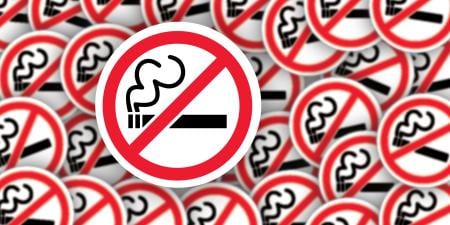Fojo T, Grady C. How much is life worth: cetuximab, non-small cell lung cancer, and the $440 billion question. J Natl Cancer Inst. 2009;101(15):1044–1048.
Cost is an ethical issue in three ways: price, value, and burden. In the United States, the high prices of potentially life-sustaining treatments and technologies that are set by manufacturers are frequently characterized as unsustainable for public and private insurance programs and for patients [1]. This problem, well documented in cancer care [2], is due not only to the large number of cancer cases (cancer is the second leading cause of death in the U.S., after heart disease) and the ever-growing number of drugs to treat different types of cancer, but also to highly problematic ways of describing—and marketing—drugs as “breakthroughs,” in part to justify extremely high prices. In their important article, Tito Fojo and Christine Grady make a compelling ethical case to their fellow oncology professionals: “We must stop deluding ourselves” that high-priced cancer drugs “are an aberration,” and we must change our prescribing practices so that we do not “signal” to manufacturers our tacit acceptance of ever-higher prices as the status quo [3].
They describe a kind of game—or gaming—in which the annual meeting of their field’s major professional society was used as a platform to present a marginally beneficial cancer drug as a “breakthrough,” a “new standard,” and “first-line treatment” [3]. These practices, and automatic Medicare coverage of FDA-approved drugs, including those with scant evidence of being any more effective than existing drugs, serve the marketing interests of manufacturers, who charge extremely high prices for these drugs. They justify doing so on the grounds that they need to recoup their research costs, although Fojo and Grady question whether drugs that can offer marginal benefits at best should be in development in the first place.
Other commentators note that some so-called breakthrough drugs are, in fact, variations on existing drugs, and that, for a few highly effective cancer drugs, profit margins are enormous [4]. They also challenge manufacturers’ implicit or explicit assertion that high prices are justified because a drug is potentially lifesaving, noting that this is far from true for the majority of cancer drugs, some of which may, at best, extend life for only a few weeks or months, accompanied by toxicity and other side effects. As Bruce E. Hillner and Thomas J. Smith concluded in a 2009 editorial in the Journal of Clinical Oncology, “We think advocacy groups should be rallying for reductions in price when drugs do not work that well” [5]. And, they added, “even if we cannot influence the price, as oncologists we have to discuss these issues with our patients” [5].
Hillner and Smith identified the deliberate conflation of a drug’s price with a drug’s value as “profiteering,” an activity unethical on its face and akin to intentionally driving up the price of life-saving medication during an epidemic [5]. The marketing of marginally beneficial drugs as lifesaving “breakthroughs” or “advances” is, in a way, even worse. During a public health emergency, medicine or vaccines may indeed save lives. This does not justify profiteering but could justify costs, such as increased production costs that may reasonably be reflected in a drug’s price. But a “marginally” beneficial drug cannot save a person’s life. Suggesting that it can is wrong no matter what the price of the drug is. Playing on this suggestion to justify a high price is doubly wrong.
In 2012 and 2013, prominent oncologists began to do what Fojo and Grady and Hillner and Smith had called for, to take a moral and professional stand against ever-increasing prices for cancer drugs. Memorial Sloan-Kettering Cancer Center announced that its doctors would refuse to prescribe a drug for the treatment of colorectal cancer priced at more than $11,000 per month that, according to evidence, offered no advantage over an existing drug [4]. In an editorial describing this decision, MSKCC oncologists noted that the typical patient with colorectal cancer is on Medicare, which would not cover the full cost of this drug, and that a Medicare patient’s monthly out-of-pocket costs for this drug alone would be “more than $2,200,” an amount “greater than the monthly income for half of Medicare participants” [1]. In other words, half of Medicare patients would have no money to live on as soon as they started this drug. This is not, remotely, a tenable situation for cancer patients and their families, and it is an unnecessary situation, given that a cheaper (though still expensive) drug with the same potential benefits was already on the market. This public stance on the part of the MSKCC oncologists led the manufacturer to “cut the price in half” [4].
This brings us to cost as value. People who have been diagnosed with cancer usually value their own lives, and research by Thomas Smith and colleagues suggests that when presented with treatment options, people with cancer will continue to opt for chemotherapy even when they are near the end of life, in part because treatment—the next drug, and the next, and the next—is being offered to them by their oncologists [5]. When oncologists fail to explain what a treatment can and cannot do for a patient, in the context of the patient’s diagnosis, prognosis, and current condition, or offer treatments that are unlikely to provide any physiological benefit to a patient, this is a failure of informed choice. The act of offering the drug implies that the drug has value. High price may further imply that the drug is newer, better, more “worth it.” Clinical oncologists should challenge and seek to change how manufacturers characterize a drug’s value to patients in a way that translates into a high price. Oncologists should, at the same time, make every effort to learn what a patient values in life—longer life? longer life together with quality life? relationships? being able to do certain things? staying out of the hospital?—and to translate these values and preferences into goals of care as a framework for considering the benefits and burdens of different treatment options [6].
Finally, cost can be experienced as a burden by patients and their families. This is true when a drug offers only marginal benefit. It is true even when a cancer drug offers tremendous benefit. This is true of imatinib (trade name, Gleevec), which was introduced in 2001 for the treatment of chronic myeloid leukemia (CML) and has succeeded in transforming a life-threatening form of cancer into a chronic disease that can be managed long-term through daily medication. The annual cost of Gleevec is $92,000, and newer drugs for CML are entering the market priced at well over $100,000 for a year of therapy. Is it appropriate to charge such a high price for one of the rare cancer drugs that is, in fact, lifesaving? No, in the opinion of more than 100 experts in the treatment of CML, who state that “the current prices” of imatinib and similarly effective CML drugs “are too high, unsustainable, may compromise access of needy patients to highly effective therapy, and are harmful to the sustainability of our national healthcare systems” [7]. Patients who are able to benefit from a cancer drug will be greatly burdened by high price, as they “have to pay the high price annually to stay alive” [7]. These experts in the management of cancer as a chronic disease build on the ethical framework of Fojo and Grady in describing the issue of drug pricing as an urgent moral concern for oncologists, in that high price, questionable value, or both can “harm our patients and societies” [7]. All oncology professionals should be familiar with these issues, as practitioners who must confront the reality of “financial toxicity” as an immense problem for cancer patients, and as effective advocates for these patients [8, 9].
References
-
Bach PB, Saltz LB, Wittes RE. In cancer care, cost matters. New York Times. October 15, 2012: A25
- Sullivan R, Peppercorn J, Sikora K, et al. Delivering affordable cancer care in high-income countries.. Lancet Oncol.. 2011;12(10):933-980.
-
Fojo T, Grady C. How much is life worth: Cetuximab, non-small cell lung cancer, and the $440 billion question. J Natl Cancer Inst. 15 2009;101(15):1044-1048.
-
Pollack A. Cancer specialists attack high drug costs. New York Times. April 26, 2013: B1.
- Hillner BE, Smith TJ. Efficacy does not necessarily translate to cost effectiveness: A case study in the challenges associated with 21st-century cancer drug pricing.. J Clin Oncol.. 2009;27(13):2111-2113.
-
Berlinger N, Jennings B, Wolf SM. Chemotherapy and other cancer treatments. In Berlinger N, Jennings B, Wolf SM. The Hastings Center Guidelines for Decisions on Life-Sustaining Treatment and Care Near the End of Life: Revised and Expanded Second Edition. New York, NY: Oxford University Press; 2013:174-178.
-
Experts in Chronic Myeloid Leukemia. Price of drugs for chronic myeloid leukemia (CML); a reflection of the unsustainable prices of cancer drugs: From the perspective of a large group of CML experts. Blood. 2013;121(22):4439-4442. http://bloodjournal.hematologylibrary.org/content/121/22/4439.long. Accessed June 21, 2013.
-
Zafar SY, Abernethy AP. Financial toxicity, Part I: A new name for a growing problem. Cancer Network. http://www.cancernetwork.com/practice/content/article/10165/2126986. Accessed June 18, 2013.
-
Zafar SY, Abernethy AP. “Financial Toxicity, Part II: How Can We Help With the Burden of Treatment-Related Costs?” Cancer http://www.cancernetwork.com/practice/content/article/10165/2137348. Accessed June 18, 2013.



